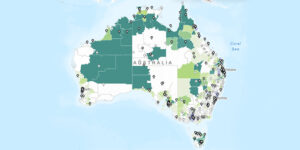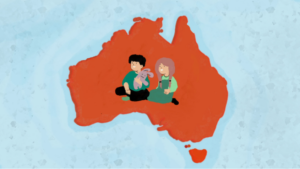Targeting investment where it counts
Over 25,000 Australian children in need are living in “early education priority zones” according to a new report from Social Ventures Australia (SVA).
The report, Targeting Investment where it counts: identifying communities for priority investment in integrated early learning models identifies areas across Australia where socioeconomic disadvantage and “childcare deserts”* are leaving children at risk of lifelong health, social and welfare problems.
This research has identified 131 communities, representing over 25,000 children in need, where children are living in early education priority zones. Early education priority zones are a perfect storm of childcare desert and severe community disadvantage. If these children don’t get quality care, education and health support now, it will have lifelong impacts.”Emma Sydenham • Director of Early Childhood, SVA
Building on research produced in collaboration with Deloitte Access Economics and The Mitchell Institute, SVA says Early Childhood Hubs are needed to address the unique challenges in these areas.
Overlay modelling results of priority areas for ECH

“The solutions to start fixing these problems are there – we can address early education priority zones with Early Childhood Hubs – one-stop-shops where early childhood education, allied health, family and parenting supports can be delivered together. We have a major opportunity to turn things around for over 25,000 children in need across Australia” says Sydenham.
Many of the identified communities in regional and remote areas have a significantly higher proportion of Aboriginal and Torres Strait Islander people. Supporting and growing a sustainable Aboriginal and Torres Strait Islander Community Controlled sector is crucial to supporting First Nations children and communities to thrive.
SVA is encouraging the Federal Government to use the research in targeting its Building Early Education Fund – ensuring funding goes to the communities and children most in need and to use the fund to build Early Childhood Hubs.
“The Albanese Government has made a great start, with the 3 day guarantee for early learning that passed through Parliament last week and the election promise of $1billion to address childcare deserts. For this investment to really make a difference in the lives of our children who are struggling, they need more than a place in childcare” says Sydenham.
SVA is part of the National Child and Family Hubs Network – a national, multidisciplinary group dedicated to strengthening Child and Family hubs across Australia.
*areas with fewer than 0.333 childcare places per child.
Download the reportClick here for media enquiries
Emma Sydenham, Director of Early Childhood at Social Ventures Australia is available for comment.
Media contact: Shini de Silva, 0404 276 478
Lachlan Smirl, Deloitte Access Economics is also available for comment: 0401 208 464
“We know how transformative high quality, holistic early years investments can be – especially for children and families facing high levels of vulnerability and disadvantage. The power of this research lies in its ability to ensure that endeavours to address enduring physical access barriers achieve the greatest potential impact – and that the returns to this much needed investment are maximised.” – Lachlan Smirl
Professor Peter Hurley, The Mitchell Institute is also available for comment:
Media contact: Gemma, 0401 664 047
“High-quality early childhood education and care can give children the best start in life, but our research into childcare deserts shows how tens of thousands of children in Australia are missing out. Targeting investment in the areas identified in this report means resources will go where they are needed most” – Professor Peter Hurley
Local community contacts available through SVA media contact (see above)
“Childcare deserts” are defined by the Mitchell Institute as areas with fewer than 0.333 childcare places per child.
“Early childhood disadvantage” is used as a term to describe communities with both high socio-economic disadvantage and early childhood vulnerability. These areas are in SEIFA deciles 1-4 and have over 10% of children developmentally vulnerable on two or more AEDC domains.
“Children in need” is used to describe children living in communities with high early childhood disadvantage who are in families with income below the poverty line, who are unemployed, or live in social housing.
“Early education priority zones” are areas where children experience both a childcare desert and early childhood disadvantage.
- That the Commonwealth Government prioritise the 131 identified at-risk communities for new infrastructure investments.
- That the Commonwealth Government build Early Childhood Hubs in these areas, or integrated early years services operated by Aboriginal Community Controlled Organisations (ACCOs) in areas with high Aboriginal and Torres Strait Islander populations.
- That the Commonwealth Government provides funding for the effective and sustainable operation of these Early Childhood Hubs and ACCOs.
- That the Commonwealth Government invests in a range of quality integrated early learning models in the 520 communities experiencing high child and family disadvantage and developmental vulnerability that are not childcare deserts. These include:
- ACCO early years services;
- holistic high-quality ECEC models; and/or
- highly intensive, quality ECEC models, as detailed in the report.







